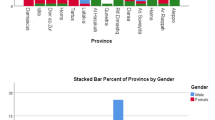Abstract
The clinical features of acute leukaemia (AL) were documented prospectively among Nigerian children resident in the South-Western rain-forest area of the country, and compared to the features in Caucasians. Twenty-nine of 51 newly diagnosed cases of AL occurred in childhood, including 19 cases of acute lymphoblastic leukaemia (ALL) and 11 of acute myelogenous leukaemia (AML). The incidence of ALL the AML in Ibadan children was the same, estimated as 0.8 X 10(-5). Thus childhood ALL was about one-third as common in Ibadan as in most developed Caucasian countries. ALL and AML occurred most frequently in the age groups 10-14 and 5-9 years respectively. Six cases of AML were associated with chloromas. Only 2 of the ALL patients survived more than one year after standard chemotherapy. The poor result appeared to be attributable to frequent occurrence among the ALL patients of adverse prognostic factors such as hyperleucocytosis, age less than 2 or greater than 7 years, L2 morphology and low PAS reactivity of the lymphoblasts. Unknown environmental factors are believed to be responsible for the unusual features of AL in children in Ibadan.
Similar content being viewed by others
Rights and permissions
About this article
Cite this article
Williams, C., Folami, A., Laditan, A. et al. Childhood acute leukaemia in a tropical population. Br J Cancer 46, 89–94 (1982). https://doi.org/10.1038/bjc.1982.169
Issue Date:
DOI: https://doi.org/10.1038/bjc.1982.169
- Springer Nature Limited
This article is cited by
-
Pediatric malignancies in Kano, Northern Nigeria
World Journal of Pediatrics (2012)
-
Paediatric oncology in developing countries
European Journal of Pediatrics (1991)




